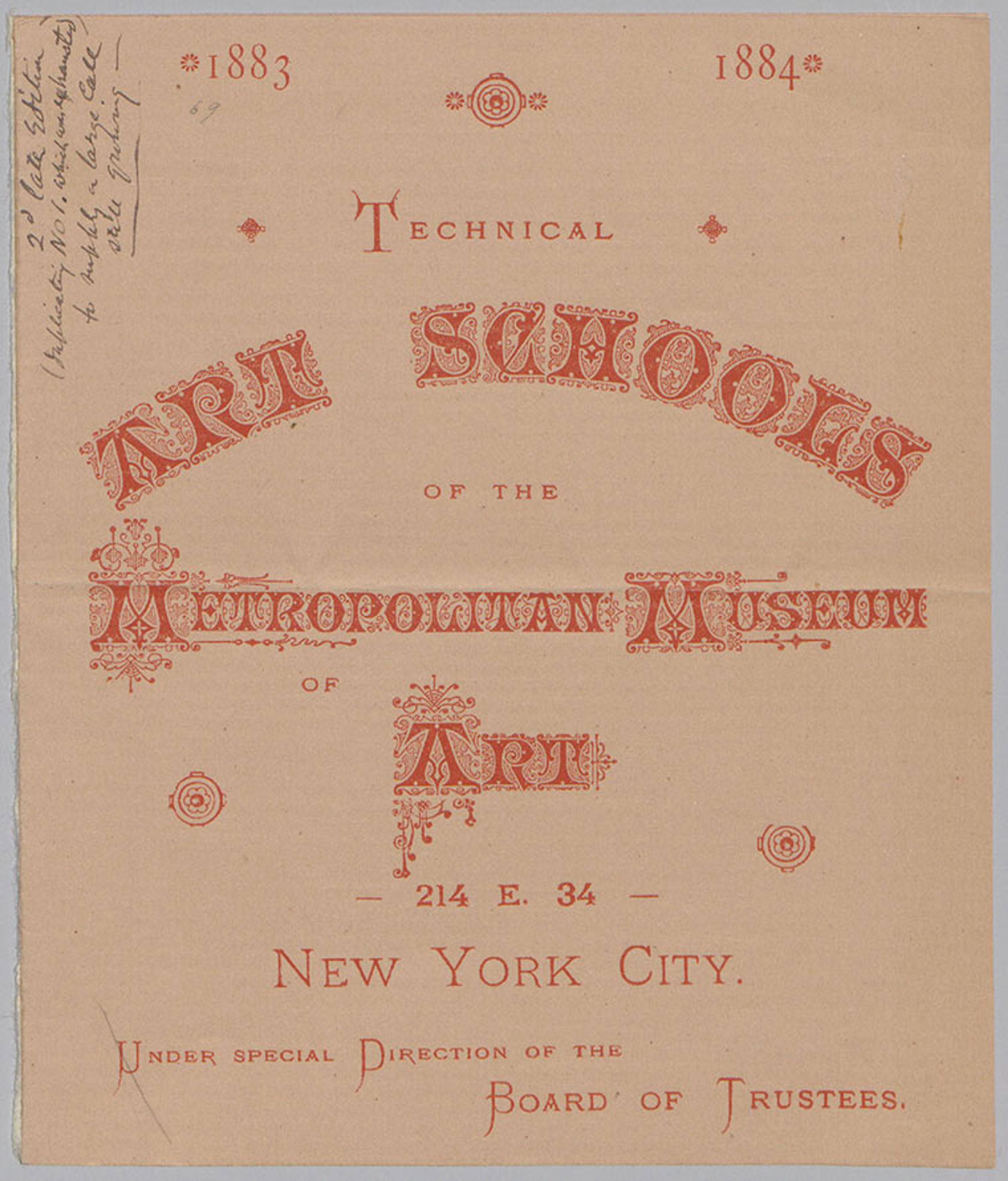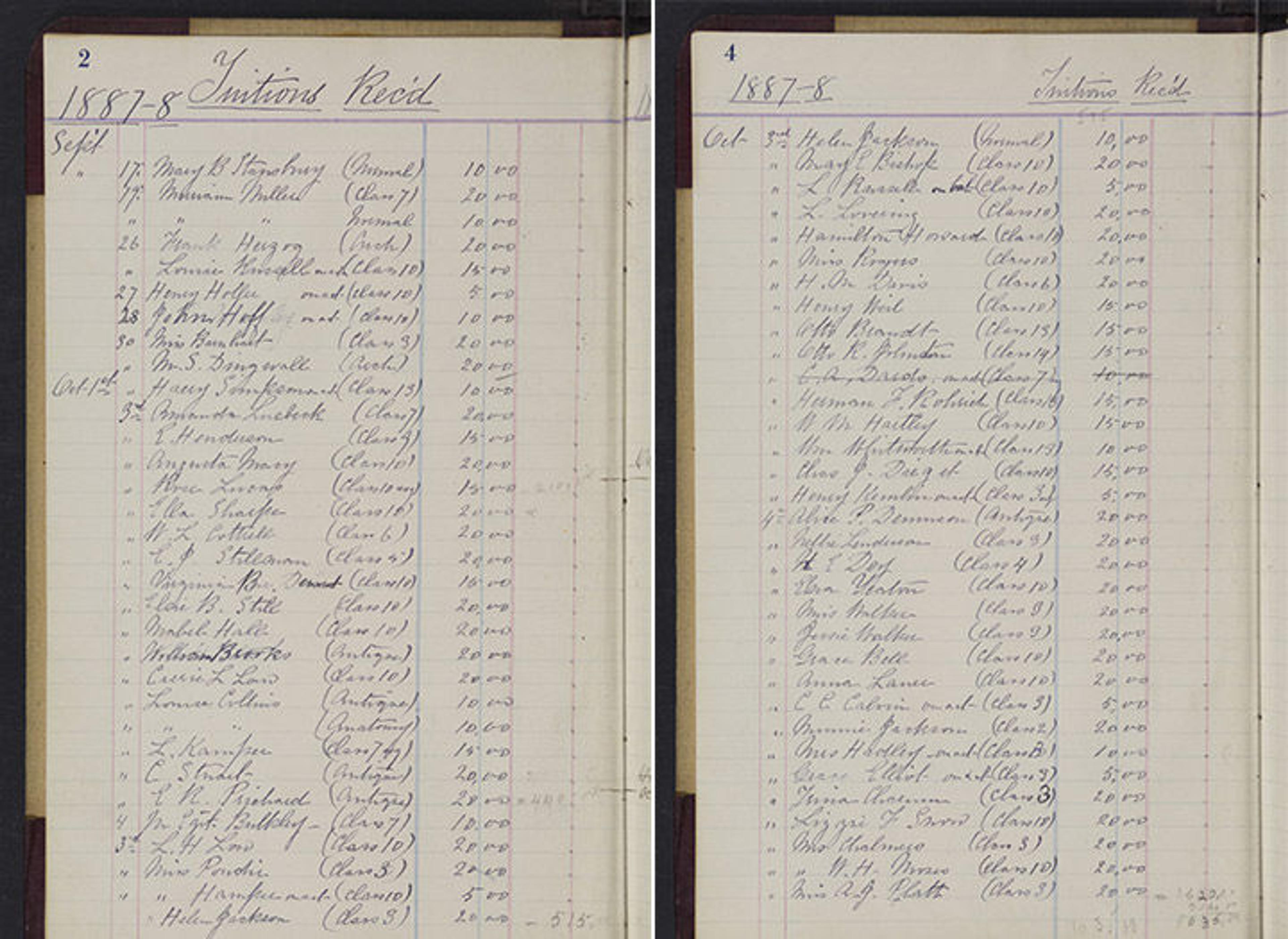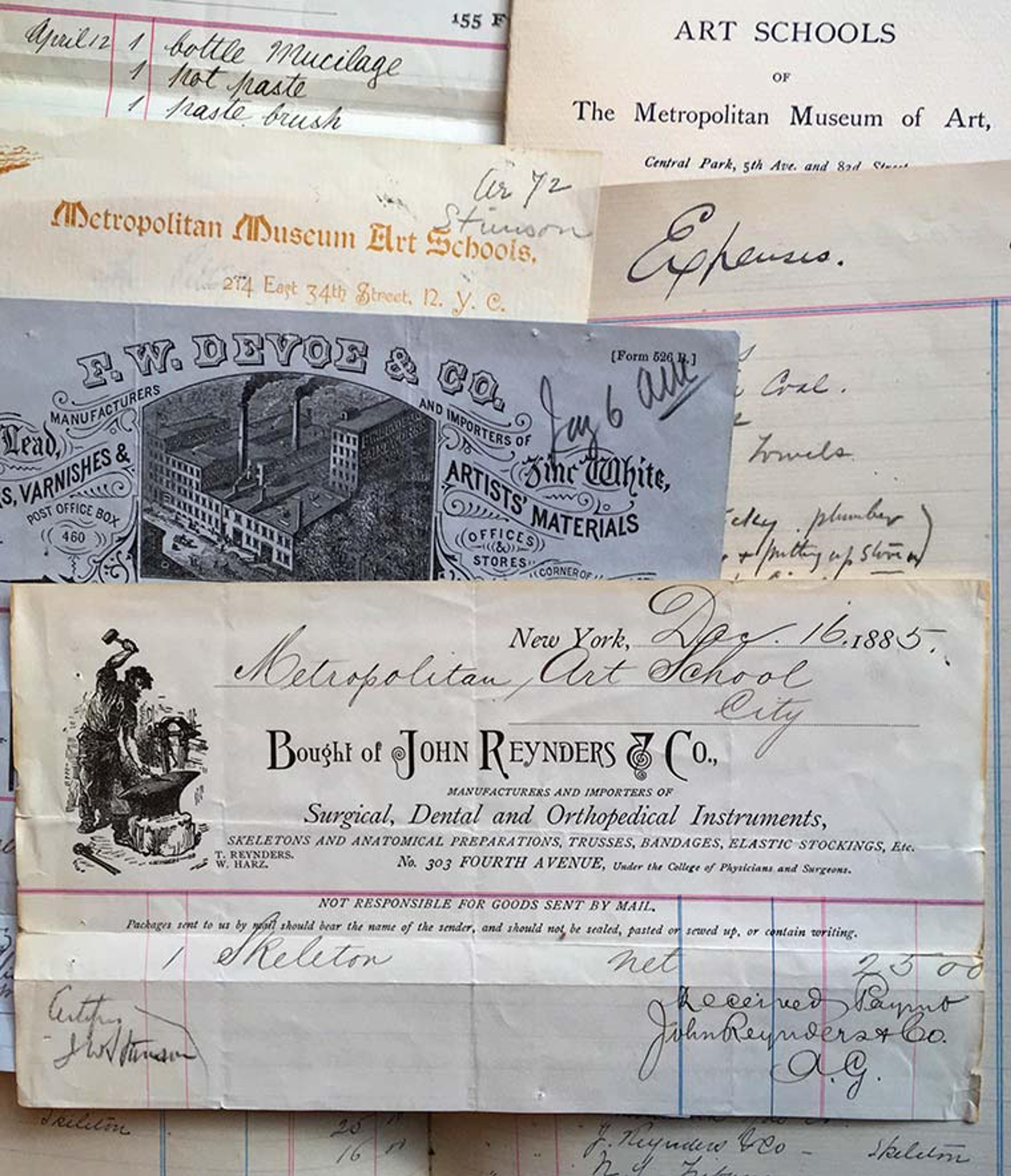
“Free Industrial Art School of The Metropolitan Museum,” New York Daily Graphic, ca. 1879–1880, Schools of The Metropolitan Museum of Art Records
Teaching and learning are central to the mission of The Metropolitan Museum of Art. The Met’s founding charter of 1870 defined its educational objectives as “encouraging and developing the study of the fine arts, and the application of arts to manufacture and practical life, of advancing the general knowledge of kindred subjects, and, to that end, of furnishing popular instruction.” Newly digitized materials from the Museum’s Archives provide special insight into how The Met advanced these objectives during the founding era.
First steps were taken in 1879 when the Museum organized a pilot program of vocational training in woodworking and metalworking. The first classes met two evenings per week and were attended by about twenty students ranging in age from sixteen to thirty. A $50,000 grant from Gideon F.T. Reed, a jeweler associated with Tiffany and Company, supported this work. The silversmith and Met benefactor Edward C. Moore, also connected with Tiffany, advised on this initial curriculum focused on industrial practice inspired by the fine arts.

Prospectus, 1883–1884, Schools of The Metropolitan Museum of Art Records
An 1883 prospectus of course offerings suggested that there was“ample dormant talent among the working youths of this city which, if encouraged and developed would furnish to New York a noble class of mechanics and artificers.” By then, classes include mechanical drawing and design, modeling and carving, carriage drafting, decoration in distemper, and sculpture. Met staff who administered the program kept detailed records about the students who enrolled, the content of the curriculum, and the art supplies they purchased for classroom use.
Today, their original hand-written ledger books, correspondence, and promotional flyers are preserved in the Museum Archives. This material has been completely digitized and is accessible for online research via the Museum’s Watson Library Digital Collections. This detailed inventory of the documents is the best guide to understand the organization and context of the records and to connect to their digital versions. All of the printed documents in the collection are full-text searchable. In the future we hope to transcribe handwritten lists of student names, so those can also be searched.

Account book listing students and tuition paid, 1887–1888, Schools of The Metropolitan Museum of Art Records
By studying this archive, we can trace the evolution of The Met’s early educational philosophy and praxis. The Museum updated the official name of its education program to reflect changes of focus. Industrial Art Schools of the Metropolitan Museum of Art, Technical Art Schools of the Metropolitan Museum of Art, and The Metropolitan Museum of Art Schools were all used at various times, indicating a gradual shift away from vocational training and towards fine arts instruction. The records also elucidate practical aspects of program administration and day-to-day operations. School activity was supervised by a manager under the direction of a Committee on Art Schools, which in turn reported to the Museum's Board of Trustees. Managers included John Buckingham, John Ward Stimson, Arthur L. Tuckerman, and Arthur Pennington. Dozens of invoices and receipts for art supplies bought by school staff document the names and addresses of purveyors of paper goods, office supplies, and artist materials in nineteenth-century New York. A curiosity among these papers is a $25 receipt for a skeleton purchased from surgical equipment dealer John Reynders. Skeletons or mannequins were often used in ateliers of the era to teach figure drawing or to plan picture compositions.

Financial and administrative documents, including receipt for purchase of a skeleton, Schools of the Metropolitan Museum of Art Records. Photo by the author
The schools occupied several Manhattan locations, including 31 Union Square, 214–216 East 34th Street, and finally the basement of the main Met Fifth Avenue building. There, the curriculum encompassed the fine arts, with courses including figure drawing, still life painting, architectural drafting, ornamental design, and illustration. During the 1890s, the prominent painter and stained-glass artist John La Farge and sculptor John Quincy Adams Ward were hired as instructors. By then, however, other New York institutions like the Art Students League offered similar training in spaces better suited to the purpose, and The Met struggled to enroll enough students to sustain its program. Museum Trustees implemented cost-saving measures and considered a fundraising campaign before finally resolving to close The Met school in 1895.

Prospectus, 1887–1888, Schools of The Metropolitan Museum of Art Records
In the early twentieth century, under new leadership and with the Museum’s finances stabilized by the receipt of substantial gifts and bequests, The Met refreshed its commitment to a pedagogic mission. A new Education Department was established and focused on school group tours, collections-based instruction in study rooms for textiles and prints, and circulation of visual materials outside Museum walls. Today the Museum presents a diverse array of educational opportunities to a global audience. Programs and activities include story time for young children, craft workshops, school class tours, Teens Take the Met, online publication of teaching and learning resources, and internships and fellowships for art historians and educators in training.
